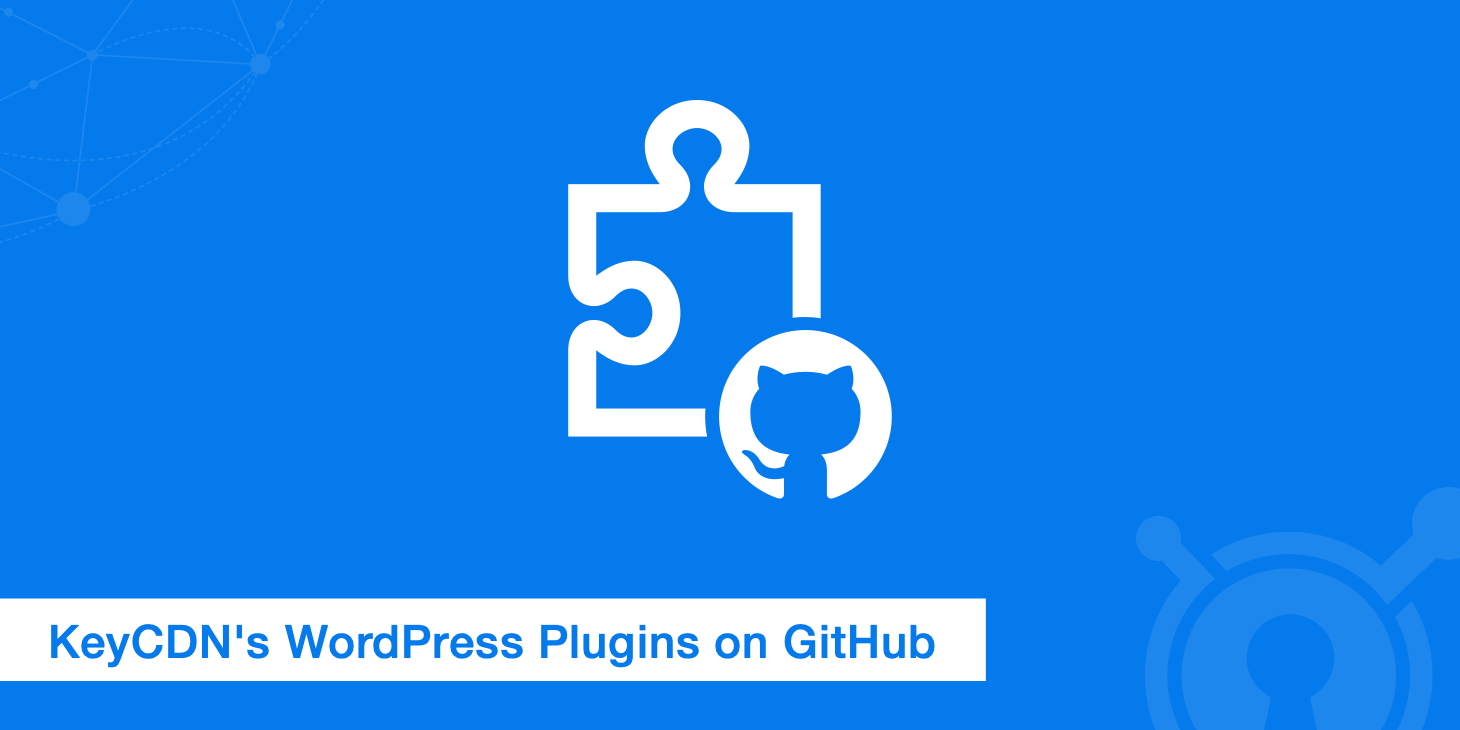KeyCDN's WordPress Plugins Are Now on GitHub

KeyCDN loves giving back to the web performance community which is why we created three WordPress plugins that are directly related to making websites faster - CDN Enabler, Cache Enabler, and Optimus. Each of these plugins serves a different purpose however they all share the common goal of making websites perform better. We've gotten great response and feedback from our users since the launch of each plugin and now we're happy to announce that each plugin is publicly available on GitHub.
This means anyone can contribute to the plugin to help make it better for the entire community.
KeyCDN's WordPress plugin overview
If you aren't familiar with the WordPress plugins that KeyCDN currently maintains, this section will provide a brief explanation of what each one does and where you can find more information.
Cache Enabler
Cache Enabler is our WordPress caching plugin that speeds up sites by creating a static HTML file of a page so that the resource-intensive process of loading dynamic content doesn't need to take place. This plugin also allows you to minify HTML or minify HTML and inline JS. At the time of writing this post, Cache Enabler had over 20,000 installs and 4.5 stars on the Cache Enabler WordPress plugin page.
Furthermore, if you want to deliver WebP images the proper way, this can be easily done through enabling the "Create an additional cached version for WebP image support" feature. To learn more about all of the features available in Cache Enabler, check out our dedicated knowledge base article.
To contribute to the development of Cache Enabler, visit the GitHub repository and create a pull request.
Optimus
Optimus is an image optimization plugin that also doubles as an API for developers who want to integrate it into their environment. This plugin is completely free for users who want to optimize images up to 100 KB in size. To remove that limit, you can upgrade to the paid version which also provides WebP image conversion, API support, and an HTTPS connection. At the time of writing this post, Optimus had over 40,000 installs and 4.2 stars on the Optimus WordPress plugin page.
If you want to contribute to the improvement of KeyCDN's Optimus image optimize plugin, then you can check out the official repository and open a pull request.
CDN Enabler
Lastly, CDN Enabler is a plugin we developed to easily integrate a CDN with any WordPress site. Once you receive the CDN URL from your content delivery network provider, you can simply enter it into the CDN Enabler plugin settings and your site's static assets will begin to be delivered via the CDN URL instead of the origin URL.
This lightweight plugin makes it extremely simple to integrate a CDN without having the need to download a plugin that comes packaged with a bunch of additional features that you may not require. Learn more about how to perform a KeyCDN integration with your WordPress site using CDN Enabler. At the time of writing this post, CDN Enabler had over 10,000 installs and 4.7 stars on the CDN Enabler WordPress plugin page.
To contribute to the improvement of KeyCDN's CDN Enabler plugin, then you can check out the official repository and open a pull request.
How to contribute
You can contribute to KeyCDN's WordPress plugins by creating a pull request via GitHub. We will then review the changes made and based on the results of the review will either merge the pull request in with the master branch or provide feedback as to what needs to be improved.
For those who are familiar with how to perform a pull request on GitHub this should be no problem. However, for those who aren't familiar or who need a little refresher, check out the walkthrough below to see how to contribute to one of the KeyCDN WordPress plugins.
We assume that you already have a GitHub account so first, you'll need to fork one of the repositories.
The next step is to clone the repository so that you can work on a local copy. To do this, click on the green "Clone or download" button of the forked version of your repository and copy the URL.
You'll then want to open your terminal and enter:
git clone https://github.com/your-username/cdn-enabler.gitNow that the repository is cloned locally, we can create/switch to a new branch and begin working on it. To create and switch to a new branch, use the following command:
git checkout -b new-branch. Be sure to name your branch descriptively.Once you're done making your changes to the codebase you can use the following command to add the changes to your local repo:
git add -AThen, you'll want to record the changes made and add a message that describes what was done. For this, use the following code:
git commit -m "Your message"Now that your changes are committed it's time to push the changes to the current branch of your forked repo:
git push --set-upstream origin new-branchOnce your changes are pushed, you can navigate to your forked repository and click on "New pull request". Select the appropriate branch and repository, add a title and comment to your pull request. Finally, select "Create pull request".
We will then review your changes and merge the code into our master branch or provide details as to why the request was denied.
Summary
KeyCDN is happy to give back to the web performance community by creating both free and low-cost solutions to help accelerate web assets globally. Now that our three WordPress plugins are open source and available to the public, we hope that others can help us improve them even further for the benefit of everyone.